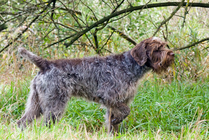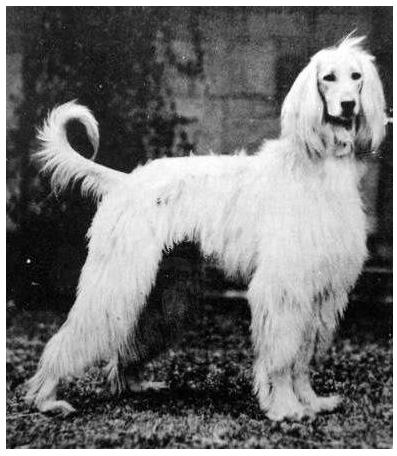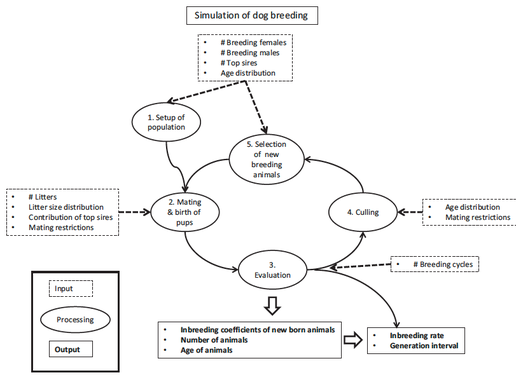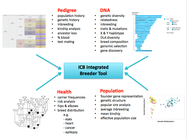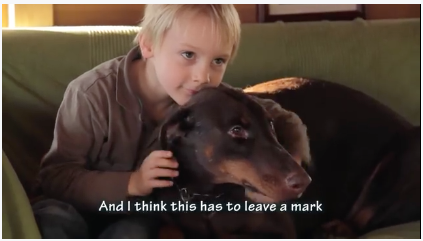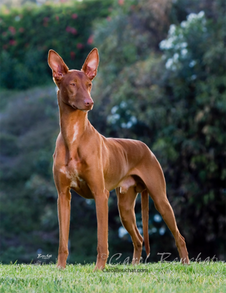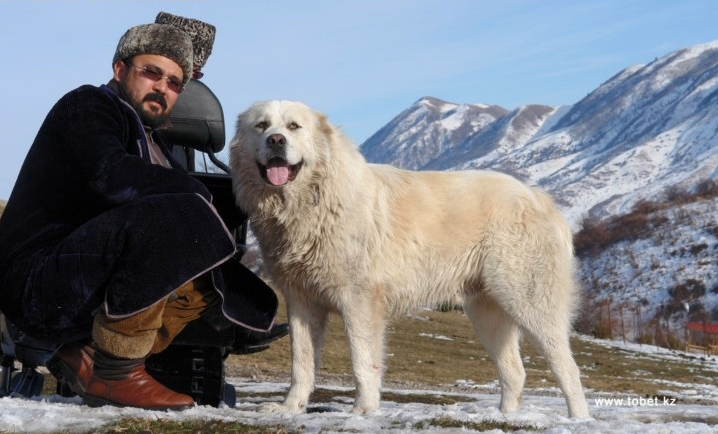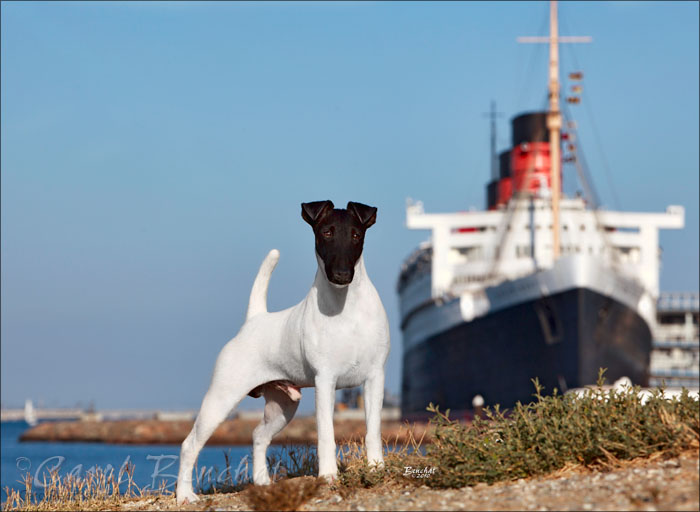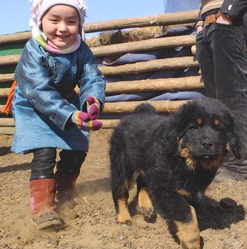|
ONLINE COURSES
* Open Registration Courses: Register and take the course any time! .............................
STARTS NEXT!
.............................
Coefficient of Inbreeding Bootcamp
Always available & always FREE .............................
.............................
.............................
.............................
The Biology of Dogs
Open Registration* .............................
Strategies for Preservation Breeding
Open Registration* .............................
.............................
Useful Genetics
Always available & always FREE* NOTE: This is a university level course ............................. Enroll in an ICB course and get 50% off Pedigree Publisher (save $40) A GREAT DEAL FOR ICB STUDENTS
Pedigree Explorer
Register for any course and qualify for a 50% discount on Pedigree Explorer, software for pedigree database management and analysis. PE computes inbreeding coefficients for ALL generation in the pedigree (100+), creates customizable pedigree charts, displays descendant trees, and more. Regular price is $80; ICB Students get it for $40. This is a great deal! Read about Pedigree Explorer here. VISIT US ON FACEBOOK
|
NEED A GIFT?EDUCATION...the gift that keeps on giving
Gift one of ICB's terrific online courses! NEW!
|
|
.................................................
The Amazing Secrets Hiding In
|
|
Using analysis tools from population genetics, we can reveal an astonishing wealth of other information about a breed just from pedigree records.
Take a walk with me though 100 years of pedigree information for the Afghan Hound that reveals founder contributions to the gene pool, population booms and busts, popular sires, and the genetics of the current gene pool. It's amazing information, and we can do it for your breed too! |
THE ICB BREEDER TOOL
The new ICB BREEDER TOOL is finally here!
The ICB Breeder Tool brings to dog breeding the latest technology in DNA analysis along with modern, cutting edge analysis tools that can help take a lot of the guesswork out of breeding.
The ICB Breeder Tool includes testing for more than 160 canine mutations and traits, as well as genotyping, inbreeding coefficient and heterozygosity, and estimates of genetic relatedness to other dogs in the breed.
The ICB Breeder Tool presents the DNA data, other health and trait information, and pedigree relationships in a single, integrated platform that puts all of the information you need about a dog at your fingertips.
The ICB Breeder Tool can be used in mate selection to assess genetic compatibility and risk of genetic disorders in offspring. It identifies the dogs with the highest genetic value in a breed, and it helps breeders identify lines at risk of extinction.
The ICB Breeder Tool can help resolve errors or missing data in pedigree databases.
The ICB Breeder Tool combines information about individual dogs with the analysis tools of population genetics to provide breeders with information about the entire breed, including genetic diversity, inbreeding, effective population size, and the size and health of the gene pool,
The ICB Breeder Tool brings cutting edge science, modern DNA technology, and sophisticated analysis tools to your breeding program to support management of health and genetic disorders.
The ICB Breeder Tool is a revolutionary new resource for the responsible, preservation breeder that will improve the health of dogs and protect the quality of the gene pool for the future.
The ICB Breeder Tool brings to dog breeding the latest technology in DNA analysis along with modern, cutting edge analysis tools that can help take a lot of the guesswork out of breeding.
The ICB Breeder Tool includes testing for more than 160 canine mutations and traits, as well as genotyping, inbreeding coefficient and heterozygosity, and estimates of genetic relatedness to other dogs in the breed.
The ICB Breeder Tool presents the DNA data, other health and trait information, and pedigree relationships in a single, integrated platform that puts all of the information you need about a dog at your fingertips.
The ICB Breeder Tool can be used in mate selection to assess genetic compatibility and risk of genetic disorders in offspring. It identifies the dogs with the highest genetic value in a breed, and it helps breeders identify lines at risk of extinction.
The ICB Breeder Tool can help resolve errors or missing data in pedigree databases.
The ICB Breeder Tool combines information about individual dogs with the analysis tools of population genetics to provide breeders with information about the entire breed, including genetic diversity, inbreeding, effective population size, and the size and health of the gene pool,
The ICB Breeder Tool brings cutting edge science, modern DNA technology, and sophisticated analysis tools to your breeding program to support management of health and genetic disorders.
The ICB Breeder Tool is a revolutionary new resource for the responsible, preservation breeder that will improve the health of dogs and protect the quality of the gene pool for the future.
NEW TOOLS FOR GENETIC MANAGEMENT
OF PUREBRED DOG POPULATIONS
OF PUREBRED DOG POPULATIONS
New software tools are becoming available that will allow breeders to more effectively manage the health of their gene pool and also look at future consequences of current breeding decisions.
While individual breeders pursue breeding programs designed to meet their individual goals, maintaining the overall health of the gene pool is essential. This is population genetic management, and while it central to the breeding programs of most captive and domestic animals, it hasn't been routinely used in the management of purebred dogs.
While individual breeders pursue breeding programs designed to meet their individual goals, maintaining the overall health of the gene pool is essential. This is population genetic management, and while it central to the breeding programs of most captive and domestic animals, it hasn't been routinely used in the management of purebred dogs.
Genetic management software can allow breeders to explore different breeding strategies by projecting the consequences of decisions into the future. Should breeding by popular sires be limited by year or by lifetime? How would increasing the effective population size change the rate of increase in inbreeding in the population? How much could inbreeding be reduced by selecting mates that are less related?
You can read more about how these new tools are being used in How to develop effective strategies for genetic management of your breed.
A GAME-CHANGER FOR BREEDERS:
THE ICB BREEDER TOOL
|
FINALLY, somebody has created the information resource breeders really need.
The ICB Integrated Breeder Tool pulls together the pedigree database, health information, DNA analyses, and population genetics of a breed so that ALL of this information can be used to make breeding decisions. |
Instead of surfing an online pedigree database, looking up health information from OFA, and tallying up DNA test results from several sources, then trying to mash it together in your head to make the best decision, breeders need a single source for information and the tools to help them use it.
Learn more about this great new resource for breeders!
UNDERSTANDING THE HERITABILITY OF BEHAVIOR IN DOGS
|
Over thousands of generations, we have selected for behavioral traits in dogs that make them useful as both working dogs and companions. Behavior is clearly genetic, but experience, environment, and other non-genetic factors can also have a substantial influence. Efficient selection for behavior as well as any other trait that is affected by both genetics and environment requires an understanding of the relative roles of genes and environment. The tool we can use to do this is a concept called "heritability".
|
In this blog post, we tackle some of the misconceptions about heritability (e.g., "A heritability of 0.25 means that 25% of a trait is determined by genetics" - FALSE) and tell you how you can increase the heritability of a trait, not by changing genetics, but by reducing the influence of non-genetic factors.
We have some great information for breeders, including two nice videos, in Understanding the Heritability of Behavior in Dogs.
We have some great information for breeders, including two nice videos, in Understanding the Heritability of Behavior in Dogs.
ARE WE WATCHING THE EXTINCTION OF A BREED?
|
The dogs we love are dying. Biologists can tell you why this is happening, and in fact even animal breeders 100 years ago could have told you why this is happening. I've written dozens of blog posts on the ICB website explaining why this is happening.
Here is the elephant in the room. Our dogs are dying of inbreeding. Decades of inbreeding in a quest for the ever more perfect dog has resulted in the loss of genes that are essential to life. |
However perfect and beautiful the dogs might be on the outside, on the inside they are broken.
Dobermans especially, but other breeds as well, are dying of heart failure, sometimes when only a few months old. It is estimated that by 2039, 100% of all Dobermans will have dilated cardiomyopathy, which results in congestive heart failure and death.
The time do so something is now, before it's too late. If it isn't already.
Dobermans especially, but other breeds as well, are dying of heart failure, sometimes when only a few months old. It is estimated that by 2039, 100% of all Dobermans will have dilated cardiomyopathy, which results in congestive heart failure and death.
The time do so something is now, before it's too late. If it isn't already.
A BROADER VIEW OF EXTINCTION RISK OF DOG BREEDS IN THE UK
|
"Of 173 breeds in the UK for which there are data, the status of 66% (115 breeds) is "critical", the FAO's highest risk category for domestic animal breeds. Another 27% (47 breeds) are "endangered", and 2% (4 breeds) are "vulnerable". Only 7 breeds (4%) could be classified as "not at risk". The reasons for the high proportion of breeds at risk are low numbers of breeding animals and an inadequate number of sires used for breeding. Comparable information is desperately needed for breed populations in other countries as well as the overall size and status of the global population."
What can breeders do about this? more... |
A CALL FOR PRESERVATION BREEDING
In the last two decades, there has been increased awareness of the value of domestic animal breeds as genetic resources that need to be managed and preserved to ensure their longterm survival and usefulness. When the programs were set up to monitor the species and breeds that should be considered for protection as genetic resources, the FAO worried about cattle, sheep, horses, chickens, turkeys, ducks, goats, pigs, partridge, ostrich, llama, deer, rabbits, and even buffalo. There are preservation programs for every species of domestic animal. Except dogs.
|
In many parts of the world, and especially in regions that still rely on the resilient, locally-adapted heritage livestock breeds, dogs are essential for herding, protecting, and managing livestock. Without dogs, protecting valuable animals from predation is done by killing the potential predators. Without dogs, moving the herds of animals the long distances necessary to follow seasonal forage is difficult or impossible.
|
Surely we should be valuing and protecting the dog breeds that have been developed for these specific tasks, as well as the populations of dogs from which all breeds are derived. more...
TWENTY KEY ELEMENTS OF A SUCCESSFUL BREEDING PROGRAM
Eschew incestuous matings! Monitor fitness indicators! Seek balanced traits!
These are a few of the things practiced by a lifelong breeder of working sleddogs who has refined his breeding program to produce quality working dogs that are also blessed with health and long life.
Sit down with a cup of tea, Jeffrey Bragg's essay, and a highlighter. This is the syllabus for a graduate degree in dog breeding. Most of what I have said in my dozens of blog posts is communicated here in a article you can read from end to end in ten minutes. Read it, then read it again. Absorb the lessons. These are simple truths that will make you a more successful breeder if measured by the soundness, health, and happiness of the puppies you produce. more...
These are a few of the things practiced by a lifelong breeder of working sleddogs who has refined his breeding program to produce quality working dogs that are also blessed with health and long life.
Sit down with a cup of tea, Jeffrey Bragg's essay, and a highlighter. This is the syllabus for a graduate degree in dog breeding. Most of what I have said in my dozens of blog posts is communicated here in a article you can read from end to end in ten minutes. Read it, then read it again. Absorb the lessons. These are simple truths that will make you a more successful breeder if measured by the soundness, health, and happiness of the puppies you produce. more...
WHAT ARE WE GOING TO DO ABOUT TERRIERS?
|
Over the last few weeks, I've been gathering up information from various sources about the genetic diversity and population numbers of dog breeds. While I'm still dredging for data, the information for terriers had already caught my attention. there are many breeds in peril, but as a group there is none worse off than the terriers.
There are two things that are critical indicators of the genetic status of purebred dogs - the level of genetic diversity in a breed, and the population size. For both, the news for terriers is not good. |
DO YOU KNOW WHAT YOU DON'T KNOW?
|
When people try to make sense of something, they dig out whatever information they have in their head and apply it. If what's in your head is all derived from personal experience, that's the information you use. If what's in your head is from education, you use that together with experience.
But what if what you think you know isn't true? How do you know that you don't really know?
For instance, is this true or false?
|
|
More than half the breeders that answered this question got it wrong and probably didn't know that they don't know the correct answer. Do you? Find out here.
THREE KEY STRATEGIES TO
REDUCE GENETIC DISORDERS IN DOGS
|
In many breeds, dodging genetic disorders is becoming a significant problem because troublesome recessive mutations can be widespread in the population. Unfortunately, because there can be dozens or even hundreds of disease-causing mutations in every dog, there will always be another genetic problem waiting in the wings to suddenly pop up in a breed.
|
If we had tests for all the mutations found in purebred dogs, both the ones we know about and the ones that have not yet been identified, it would become impossible to breed if breeders wanted to avoid every risk. So what's a breeder to do?
We'll tell you about three basic principles of sound genetic management that will help reduce the frequency of genetic disorders in your breed.
Sometimes, the traditional ways of doing things really are better.
In the stark landscape of Mongolia, nomadic herders have migrated with their livestock to follow the forage for thousands of years.
During the Soviet occupation of Mongolia, most of the livestock guarding dogs were shot or released. Without the dogs, herdsmen resorted to shooting the predators - wolves and the endangered snow leopard.
ICB is proud to be assisting The Mongolian Bankhar Dog Project in a breeding program to bring back the dogs that have protected the livestock for thousands of years, the Mongolian Bankar.
In the stark landscape of Mongolia, nomadic herders have migrated with their livestock to follow the forage for thousands of years.
During the Soviet occupation of Mongolia, most of the livestock guarding dogs were shot or released. Without the dogs, herdsmen resorted to shooting the predators - wolves and the endangered snow leopard.
ICB is proud to be assisting The Mongolian Bankhar Dog Project in a breeding program to bring back the dogs that have protected the livestock for thousands of years, the Mongolian Bankar.
|
Dogs instead of guns
The Bankhar Dog Project, partnering with ICB and the the Snow Leopard Trust and with the cooperation of Mongolia's Gorkhi Terelj and Hustai National Parks, has established a breeding program in Mongolia and whelped the first generation of nineteen puppies this past winter. The pups have been placed with herders and are already on the job, keeping their hoofed "family" safe from predators and the endangered snow leopards and wolves safe from guns. |
This is a win for everybody. The predators that are essential for maintaining the balance of the ecosystem can coexist with the livestock that sustain the nomadic families and their traditional lifestyle.
You can read more about this great project on the Bankhar Dog Project website and follow them on Facebook.
|
The Institute of Canine Biology is an independent, international consortium of canine biologists. To know that we know what we know, and that we do not know what we do not know, that is true knowledge. Henry David Thoreau |
|



